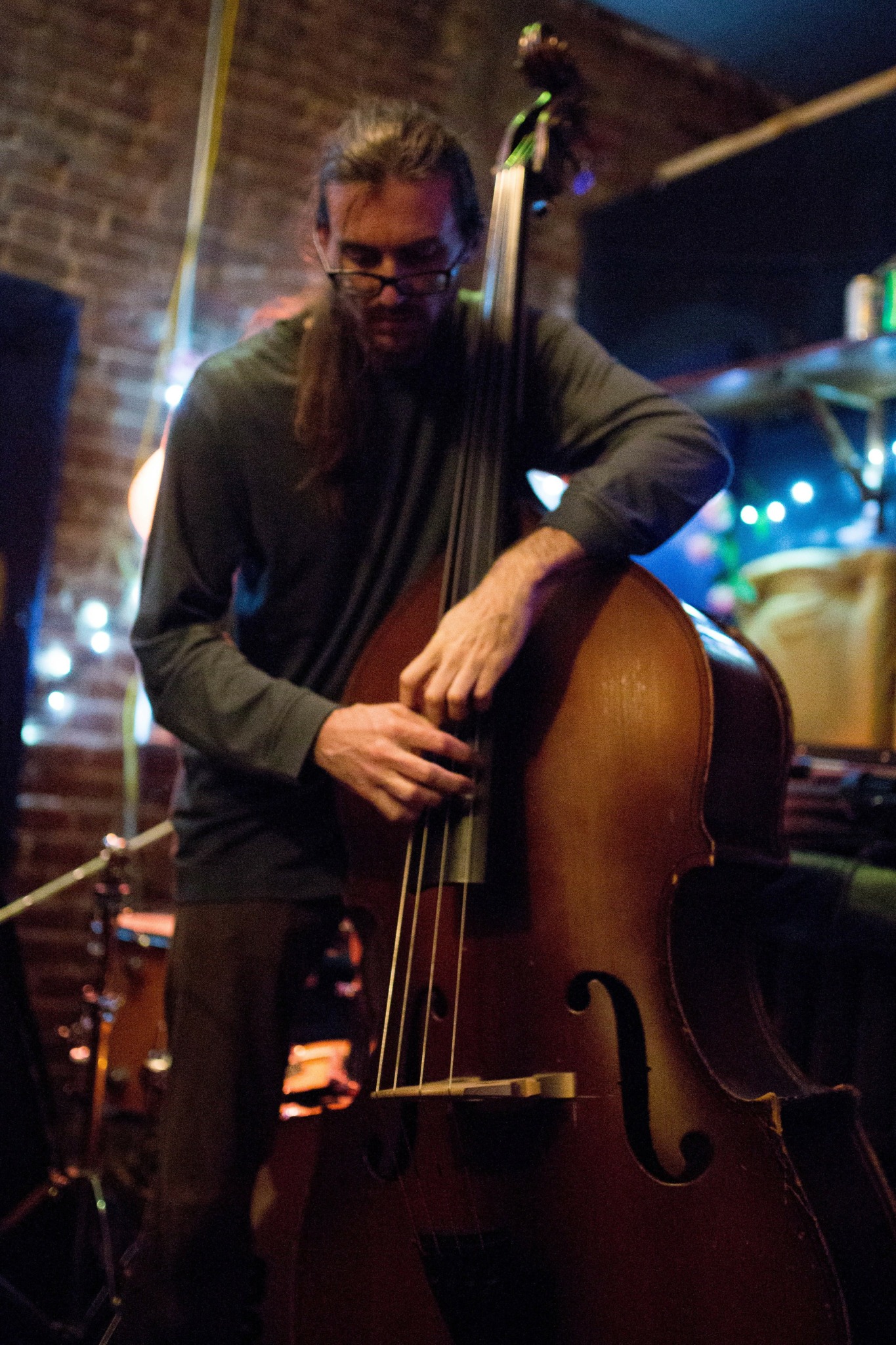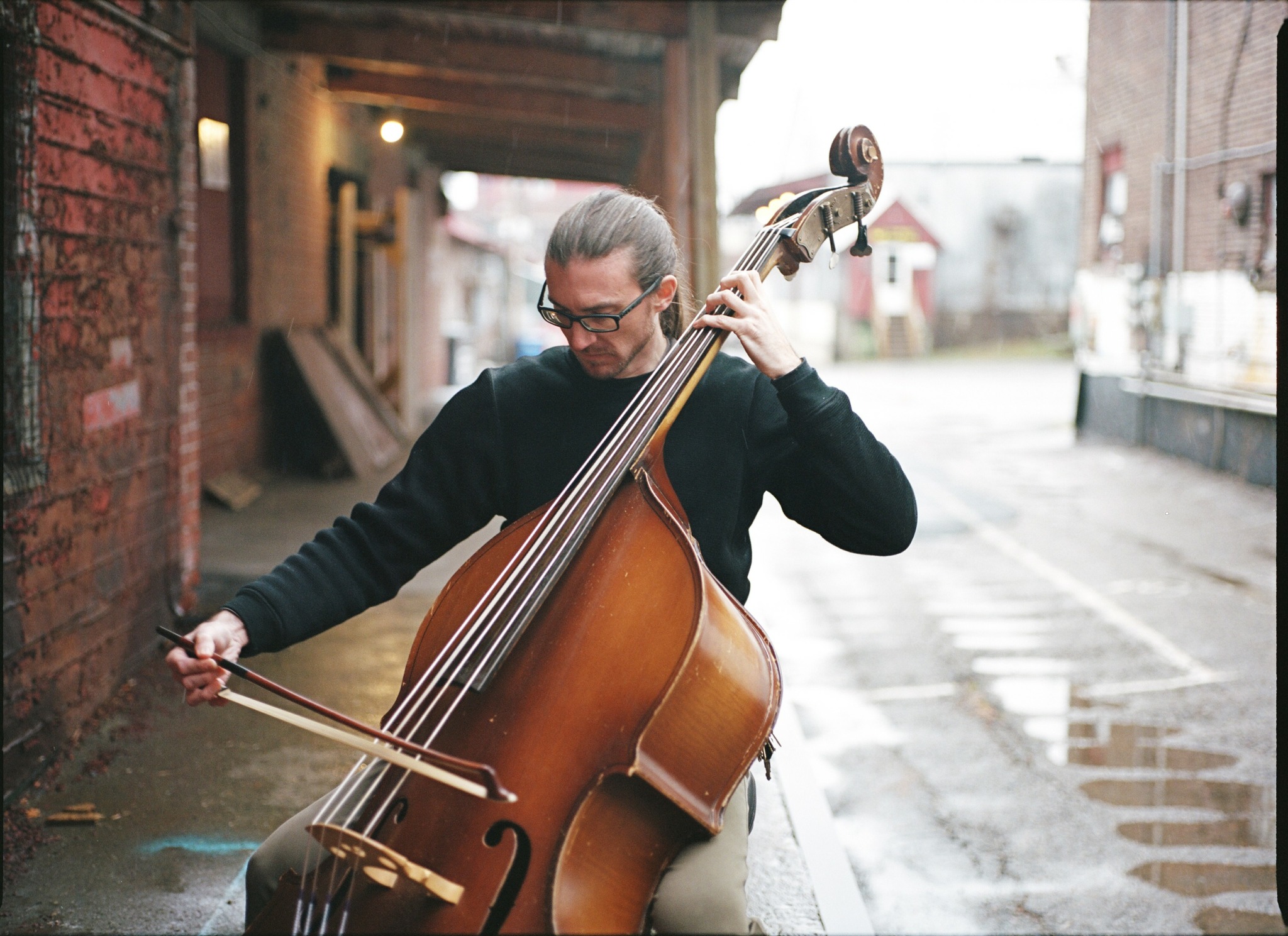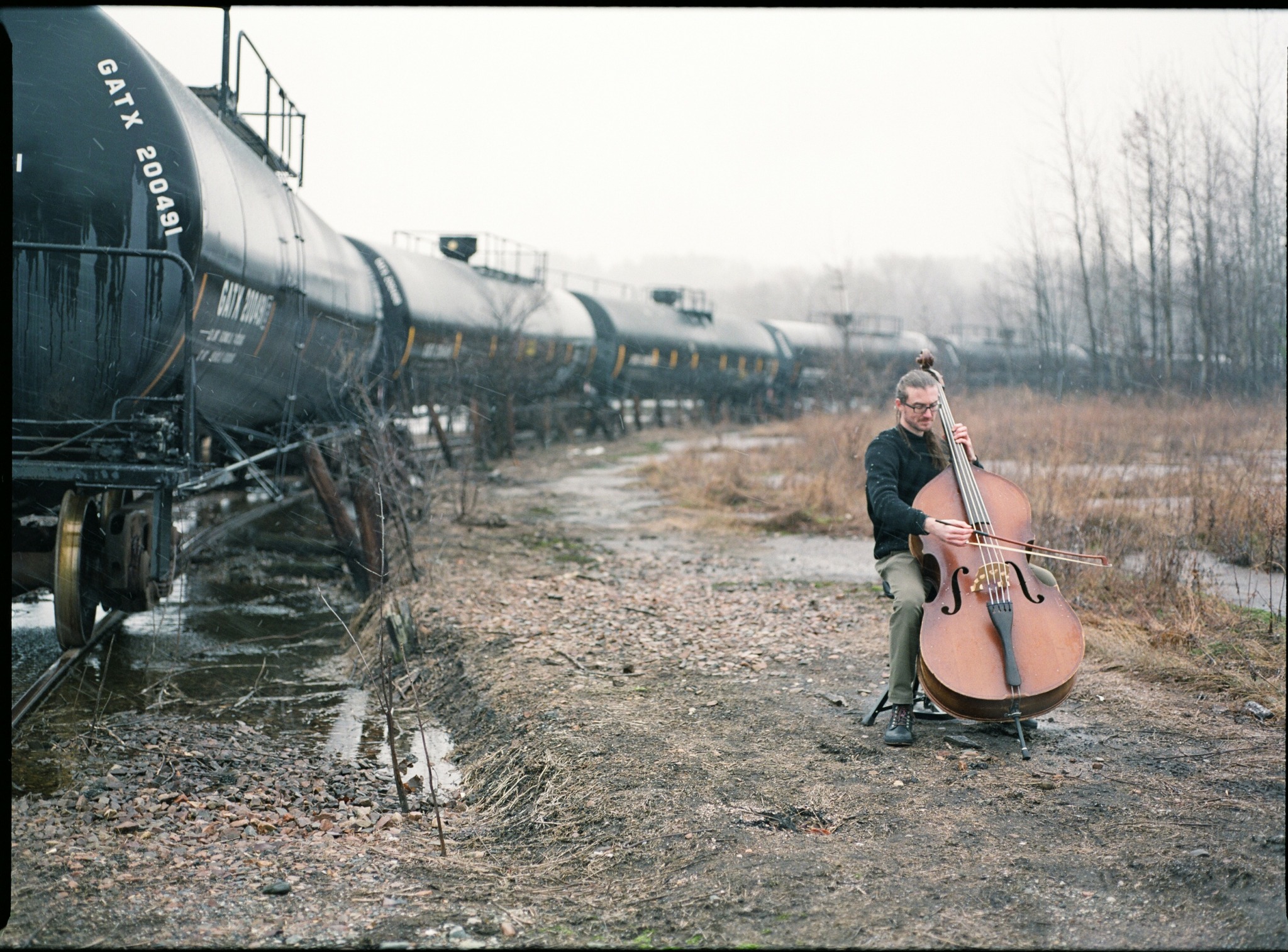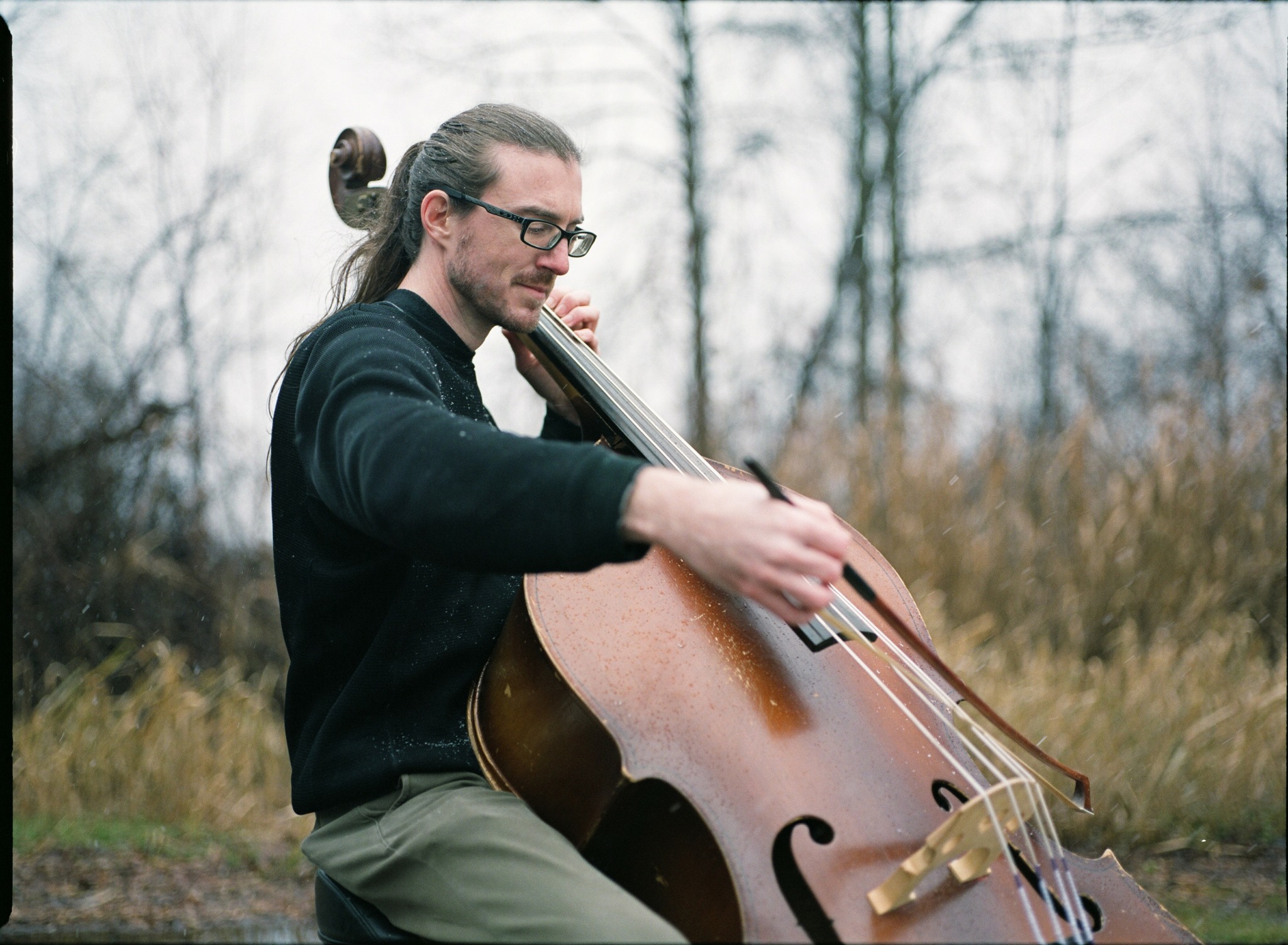We recently connected with Gahlord Dewald and have shared our conversation below.
Hi Gahlord, thanks for joining us today. We’d love to hear the backstory behind a risk you’ve taken – whether big or small, walk us through what it was like and how it ultimately turned out.
So much of living life as a creative involves taking a risk but I’ll narrow down to a big one and one that had a strong impact on some of my more recent work.
In 2017 I was feeling a little disconnected socially. Though much of my work is solo I’m always seeking out collaborations and opportunities to engage with others and the social gap I was feeling was hitting me pretty hard. In that kind of headspace I was finding it hard to make stronger connections but also truly wanting more meaningful engagement with other creative people.
I had a large creative studio space in Burlington Vermont and I had read a short thing posted by digital artist Taeyoon Choi about starting an artist collective. I decided I needed to do that, to start a music collective.
Musicians don’t really have a clear analog to visual artists’ collectives. Sure we have bands or ensembles but those aren’t quite the same. There’s a nebulous interplay between individual work and all-together group work that I really admire in visual artist collectives that isn’t quite present in a band or ensemble. Additionally, so much of music work ends up being more or less transactional: play a gig get a check, sub for someone get a check, compose some music get a check. The freedom to influence and be influenced, or to work alone on similar problems together was something I wanted to do with other musicians.
So I transformed my studio into a collective called Community of Sound. This felt risky on a few levels. It involved opening up my physical space, a tremendous amount of specialized studio equipment, and my time to an unkown group of creative musicians, many of whom I had never worked with before. But it was worth it. The founding group was truly incredible and I learned a ton from them. In particular, composers Danielle O’Hallisey and Benjamin Mayock and also musical polymath Adrianne Cooper Smith.
We were intent on building an inclusive physical space centered on creating new music, much of it very outside-the-box. We also structured it around an exceptionally flat hierarchy: there weren’t time limits space availability, there were exceptionally few limits on the kinds of activity the space supported. Most everything was run with a “respect the initiative” spirit and a commitment to having conversations about what we each needed. Along the way we built a culture of communication and collaboration
A tremendous amount of creative work happened as a result of taking the risk to open up and make Community of Sound: three or four different concert series, collaborations with local businesses, instructional space, ensemble rehearsals, punk shows, choral shows for elderly singers, album recordings, a radio drama.
Though I have now moved on to live in the middle of the Pacific, I’m extremely proud that Community of Sound continues in much the same spirit as we built it.

Awesome – so before we get into the rest of our questions, can you briefly introduce yourself to our readers.
I’m a creative musician, meaning most of the work I do involves music that hasn’t been heard before or is newly created–sometimes created on the spot via free improvisation. The music I make is directed towards texture, the tactile and physical sensations of sound. There may not be a tune that you can whistle but there is absolutely something you can feel in my music.
My primary instrument is double bass–the one that looks like a cello but is taller than a person. In most popular music this instrument acts as a kind of transmission between the percussion and the rest of an ensemble, it’s the sound that will determine if you get up and dance or not. In much of my work I’m bringing this sound into a solo setting and giving people a chance to listen in to all the varieties of texture and wonder that can be found within it.
I also work with electronic instruments. Some of those instruments are hardware items with knobs and wires. Others are software driven and I’ve written code in Lua or Supercollider to drive them. Using technology to explore relationships between time and meaning, controlled through written text (computer code) is another way of exposing the different textures we can find in sound.
Collaboration is another key element of my creative practice. Working with others in ad hoc situations, adjusting to changes in the moment, is one of my favorite ways of making music. I’m fortunate that people enjoy working with me in this way and I’ve had the opportunity to perform with people like mdrungam artist Rajna Swaminathan, my longtime collaborator poet/bass clarinetist Toussaint St. Negritude, and trumpet player Raphe Malik was an early mentor in free jazz playing for me. I also played a night of jazz standards with Peter Serkin that was really fun and playful. Each collaboration is a chance for me to experience how others feel time moving, new ways of hearing and organizing time. That’s the real goal, experience time together in our own way.

Is there something you think non-creatives will struggle to understand about your journey as a creative?
I once spent a few weeks with bassist Barre Phillips when he was living in France. I was there to study free improvisation with him. Upon return a classical musician friend asked me “Hey I mean this in the most respectful way possible: what do you study when the music you’re doing is made up on the spot?” The idea that musicians can make music without sheet music or other set of codified rules is strange enough but then to suggest that we might have to practice not using sheet music can be a source of confusion for some.
In reality, I rehearse and practice the most with the musicians with whom I do free improvisation. To do this kind of music requires a different layer of listening and openness to the moment. When there are no set rules about how to respond to change then we end up taking on new roles and exchanging ideas in a different way. The players themselves become the music and the more I work with someone the more I can feel where they are going and work with or in tension with them.
And I guess that’s the real thing that I think relates to everyone and not just musicians or creative musicians: Free improvisation is a practice of learning to work in real-time with changing situations, learning to work together, learning to work with and through tension and get somewhere that’s worth going. Those are things that all of us do every day.

How can we best help foster a strong, supportive environment for artists and creatives?
The short answer is direct payments to artists. Nearly every system that purports to help artists becomes a system to syphon off revenue or data. If artists are given money directly then they can spend it to do the things that need doing. Go ahead and listen to music on Spotify because that’s a convenient way to listen to music. But if you want to support music then give money directly to some musicians.
I’ve spent a lot of time thinking about the economic relationships between towns and their music scenes. It seems to me that the economic health of a town is directly reflected in the health of their music scene.
In order to have a healthy music scene there needs to be space where sound can be made which is affordable to start something new. Raw production space to build and prototype shows and experiences that is different from theaters and venues. There needs to be places of different size where sound can be shared with the public. Some places for small audiences where new ideas can be tried out and improved, or where experiences for small audiences feel magical. People need to have enough time to get together and make music or attend performances.
Much of the thinking in municipalities and tech platforms is really outdated and transactional, built around a low-stakes idea that music exists to sell a ticket/subscription/alcohol. It’s so old it’s almost archaic. The real power of music and the arts of course is relational: see a show and build relationships in your community. This creates network effects around people and ideas within a community. The network effects are so much more powerful than a $20 cover charge or a $13/month subscription or 40% increase in bar sales.
Also, the network effects ellide the boundaries between artists and audience. And it turns out that the things that artists and creatives need are the same things that everyone needs: time to do meaningful work alone and in teams, space to do meaningful work, access to effective tools, and a way to share that work with people who will appreciate it.
Contact Info:
- Website: gahlorddewald
- Instagram: gahlord
- Linkedin: http://linkedin.com/in/gahlorddewald/
- Other: https://buttondown.email/gahlord

Image Credits
Mira Steinzor (all photos)


